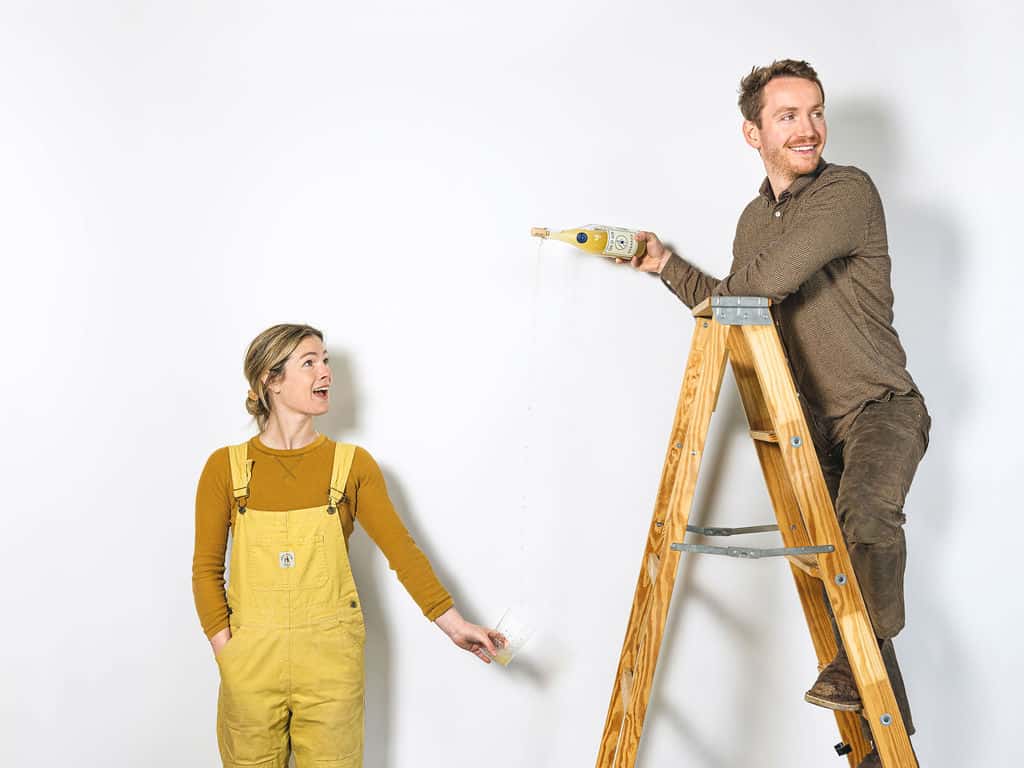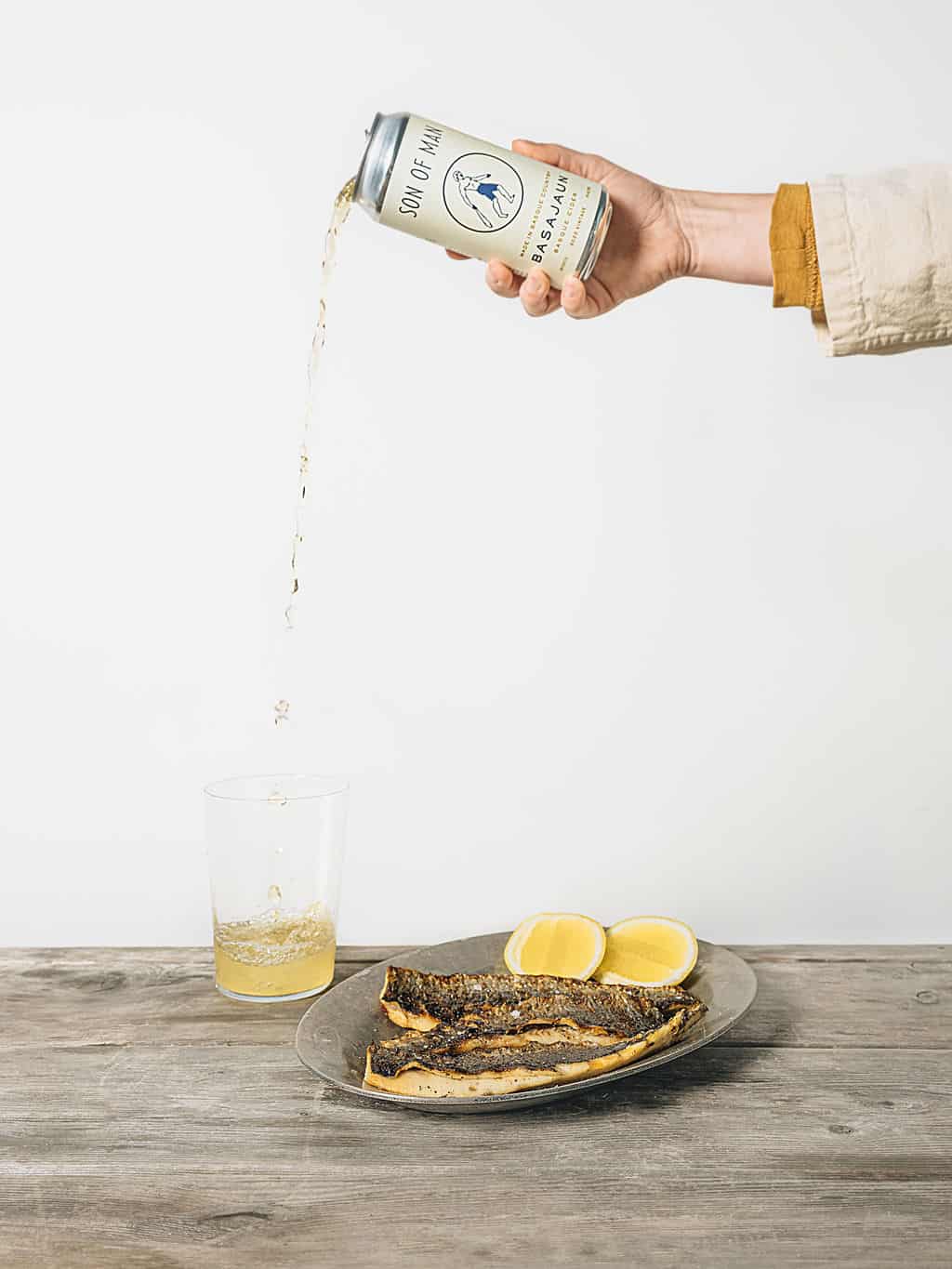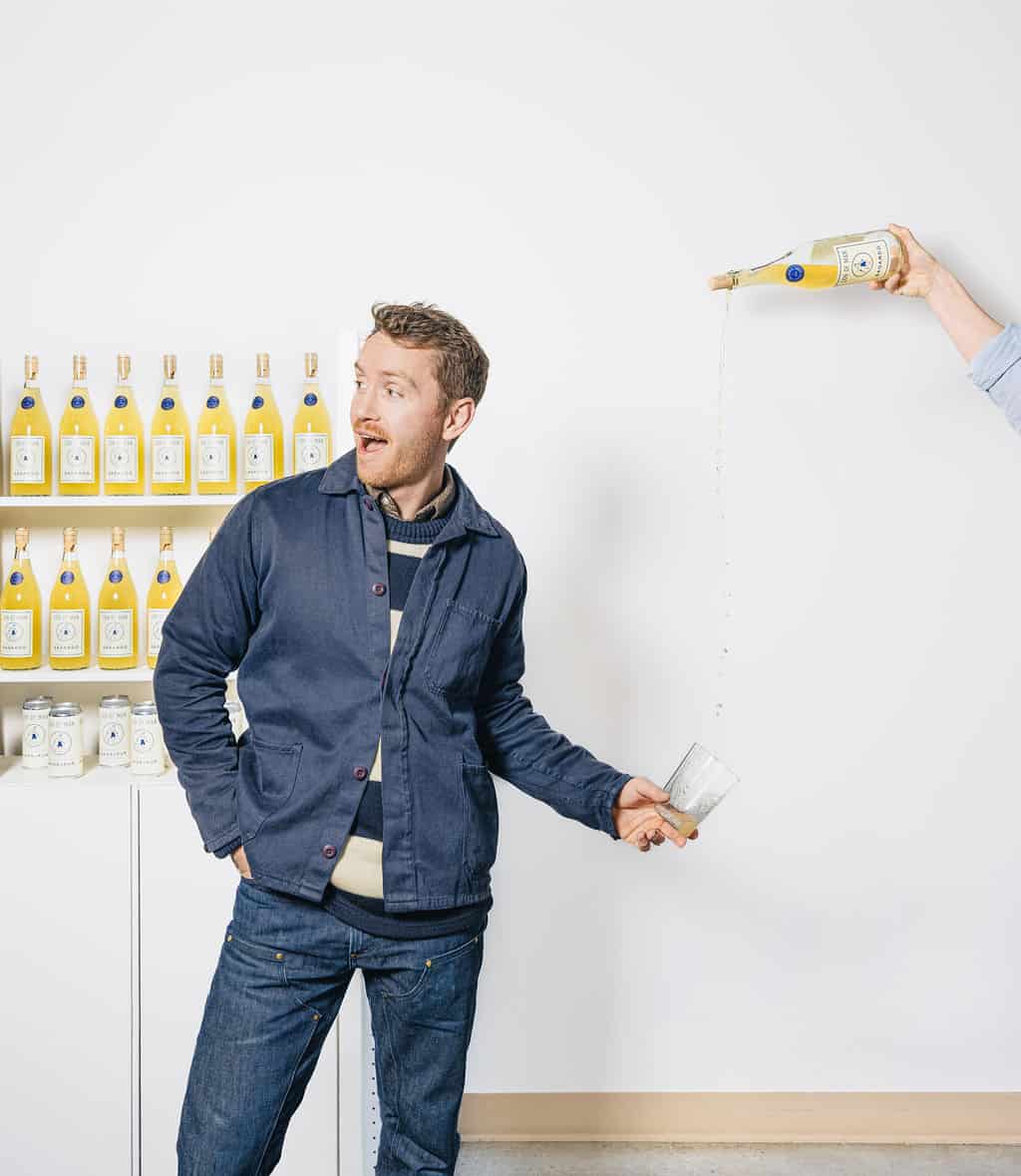Have you ever been at a bar or party where someone is attempting the Spanish/Basque-style long pour? Holding a bottle above their head, they attempt to aim a glimmering stream of liquid into a glass held at waist-level, with everyone hooting and cheering in support. This pouring technique, which is a long-standing custom in the Basque region and Asturias, Spain, known as escancier, has the kind of electric drama and performance that’s right up there with drinking from a porrón. It’s a joyful way to serve sidra or Basque-style ciders, and learning to do it right is akin to earning a badge on your cider-enthusiast sash.
However, nailing the long pour can be a bit tricky. As with so many tasks involving hand-eye coordination, one’s long pour skills either slightly improve or vastly devolve after imbibing (which is likely happening any place the long pour is taking place). And, long pour purists will agree that proper form includes not looking at the bottle or the glass, but instead sort of staring at the space between them, leaving the precision of the pour up to instinct and feel. There is, to put it mildly, the chance of wasting a good amount of cider and creating a slippery splash zone as you develop your skills.
For some background info and advice on the long pour, we rang up Jasper Smith, founder of Son of Man Cider, who we met back in early 2020. Son of Man is an Oregon-based cidery making all Basque-inspired ciders, so we figured Smith is pretty well-versed in escancier methodology (spoiler alert: we assumed correctly).

Before we dive in, a bit of cultural context:
Smith, who just visited Asturias last September, confirms that the pomp of the pour is palpable in Spain, especially in this region. In most bars in Asturias, he says, sidra is served via long pour, every single time you order. In the Basque region, he says, you won’t necessarily get a long pour every time.
He also explains that although Spanish/Basque ciders aren’t super-carbonated, they’re also aren’t still; they simply don’t have tons of dissolved C02 the way more robustly sparkling ciders so. So the long pour is important beyond adding drama to service; pouring this way breaks the surface tension in the cider, and in doing that, some of the CO2 is released.
“It’s like a little miniature explosion of aroma and flavor compounds in the cider get shot up into the glass,” Smith says. “So, the idea is that you make a perfect sip of cider, and traditionally, you pour just enough to drink, and then pour and drink again.”
There is another cultural component to this pouring method, as well. Smith notes that Asturias has not been as economically prosperous as Basque county, and that the long pour has this sense of carefree abundance that is important.
“You spill some cider on the floor, and anything you don’t drink in one sip you toss out of your glass,” he says. “The point of that is the illustration of bounty, like: We might not be the world’s largest economy, but we can eat and drink well and there’s plenty of cider.”
The cider long pour also helps determine the quality of a cider. Pouring this way will feature the three factors of well-made sidra:
- Espalme: This is the fizz, and after the long pour, there should be a little bit of a head which should sizzle and then quickly disappear.
- Aguante: Once the head has disappeared it should almost look like an oil slick, with teeny tiny bubbles forming like a little galaxy in the middle of the cider.
- Pegue: This refers to how the bubbles cling to the side of the glass. It should form a similar shape to lacing after you’ve poured a beer.

Now for the long pour advice:
First, Smith notes, many bottles of sidra (including Son of Man’s bottles) comes with a little cork that features a built in escanciador. This is a little notch in the cork that regulates the flow of the liquid. You pull the cork, then put it back in the neck of the bottle upside down. These are reusable, so you can save them for future long pours!
Next, with your non-dominant hand, hold your glass where your belt buckle is/would be, and then line the opening of the bottle at waist height and lift the bottle straight up, keeping them aligned. To be clear: you’re not pouring at this time, just getting into position. Starting pouring at the glass and then lifting the bottle will make you “look like a noob,” according to Smith.
Then, with a hefty dose of confidence, gently tip the bottle and let the cider begin to flow. If you need to re-align, adjust the position of the glass, and not the bottle. Try not to wobble or title the bottle, which will create uneven, zig-zagging streams.
“The key is a steady hand, and you either get a lot better at it or worse if you’ve been drinking!” Smith says.
The full Asturian method it to pour high, while in Basque Country, they often pour from shoulder height, which, Smith notes, is a lot easier because you see both the bottle and glass.
One other tip that Smith has is to use a wide-mouth glass, if possible!

At its root, Smith says that the long pour is meant to be fun, interactive, and a little bit wild.
“From a hospitality standpoint, people see you pouring cider like that and every table around is like, What is that?!” he notes. “It takes some of the snootiness out of beverage service.”
Long pour aficionados: Do you have advice to share? We’d love to hear it! Chime in the conversation over on Facebook or Instagram.
- Photos: Melissa Bradley for Son of Man